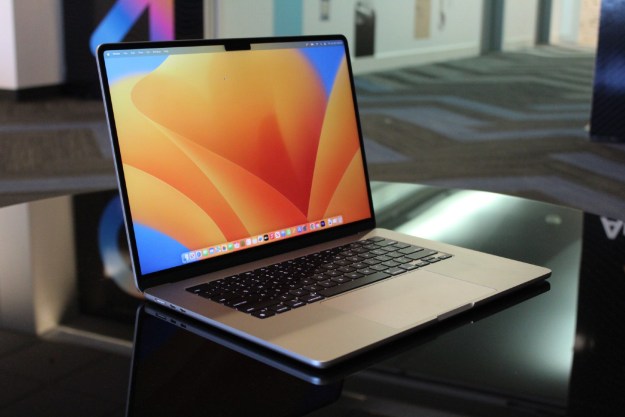When Apple launched the 15-inch MacBook Air at its Worldwide Developers Conference (WWDC), it seemed like there wasn’t too much separating it from its 13-inch sibling. Yet a new set of tests has shown that the larger model pulls ahead in some key ways, making it a much more attractive purchase if you want maximum performance in a slimline laptop.
The testing was conducted by YouTuber Max Tech, who pitted the 15-inch MacBook Air against Apple’s smaller 13-inch version. Both laptops had the M2 chip and 256GB of storage, so you might think the only difference would be found in the size of the displays. Yet that’s not how the testing played out at all.
One of the first comparisons concerned the laptops’ speakers. Apple’s Macs are well known for their excellent audio output, but in this test, the 15-inch MacBook Air easily outclassed the smaller 13-inch model, with sound that was richer and fuller in almost every way. That’s thanks to the 15-inch’s six-speaker array, a 50% increase over the 13-inch’s four-speaker setup. Clearly, that improvement has paid dividends.
Notably, the SSD performance was near-identical across both MacBook Air models. Since Max Tech was using the base 256GB versions of Apple’s laptop, that meant they both came with a single NAND chip. As we’ve seen before, this can impact storage speeds compared to the higher-capacity models, which use two NAND chips. In Max Tech’s testing, though, the 15-inch and 13-inch MacBook Airs were neck and neck.
Minimal throttling

While both models were almost identical when it came to single-core CPU performance, the 15-inch model pulled slightly ahead in the multi-core benchmark — although the differences were minimal. In Cinebench R23, though, the 15-inch started to extend its lead, scoring 7,930 points to the 13-inch’s 7,753.
Yet perhaps the most important test concerned thermal throttling. Unlike the MacBook Pro, the MacBook Air doesn’t have a fan and instead relies on passive cooling to keep its components frosty. That includes the chassis acting as a large heatsink, and since the 15-inch MacBook Air has a bigger footprint, its cooling capacity should be greater.
That assumption was borne out in Max Tech’s benchmark results. During an extended Cinebench R23 stress test, the 15-inch MacBook Air was able to keep around seven degrees cooler, according to Max Tech. Not only that, but the larger device was able to maintain a higher clock speed as a result of this better cooling. And when the 15-inch model’s temperature rose to parity with the 13-inch MacBook Air, it was still able to preserve its higher clock speeds.
After 10 minutes, the 13-inch MacBook Air saw a noticeable dip in power output as the machine’s throttling kicked in. Yet there was no such decline in the 15-inch model, which is an encouraging sign if you’re looking to put it through its performance paces. That resulted in a higher score of 7,509 versus 7,082 in favor of Apple’s larger laptop.
Better graphics performance

In terms of graphical power, the 15-inch MacBook Air again came out on top, scoring 45,418 in Geekbench 6.1 versus 39,326 for its rival. In 3DMark’s Wild Life benchmark, the disparity was just as stark, where the larger device hit 41.3 fps to the 13-inch MacBook Air’s 34.4 fps — an improvement of just over 20%.
And again, the 13-inch laptop suffered more throttling in terms of GPU performance, just as it did with CPU performance. In lengthy rendering or gaming sessions, that could make a difference.
All of these results are interesting because they suggest that there are plenty of reasons to get the 15-inch MacBook Air beyond simply wanting more screen real estate. The increased size of the device — and the larger chassis heatsink that results from this — helps the 15-inch model keep cooler in use, which in turn gives you better performance even with the same chip as you’ll find in the 13-inch MacBook Air.
It’s encouraging to see, and while you’ll get much better results from a 14-inch or 16-inch MacBook Pro, it’s clear that the 15-inch model is the MacBook Air to buy if you are after as much performance as you can get from one of Apple’s lightweight laptops.
Editors' Recommendations
- This Windows laptop costs under $1,000 and handily beats the MacBook Air
- Apple may be working on a crazy modular MacBook with 3 screens
- Should you buy the M2 MacBook Pro or wait for the M3?
- The M3 MacBook Pro may launch sooner than anyone expected
- Apple’s 32-inch M3 iMac could be facing yet another delay




